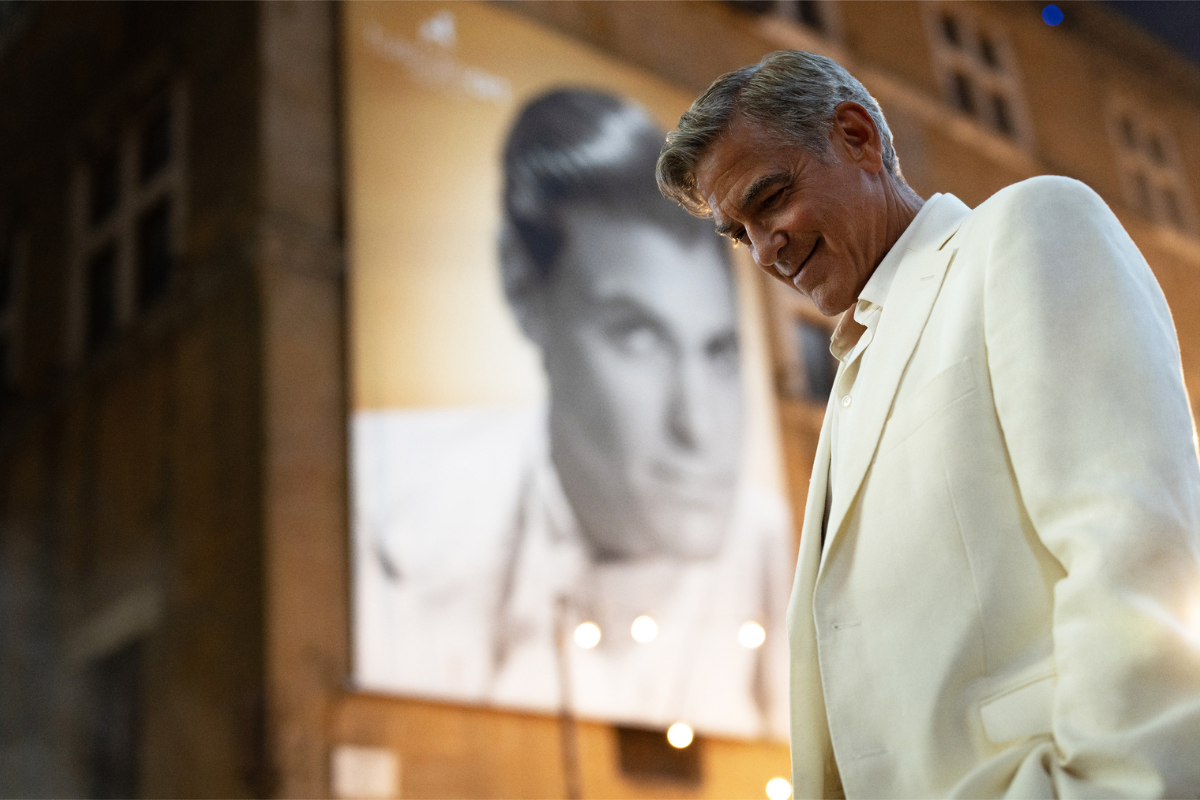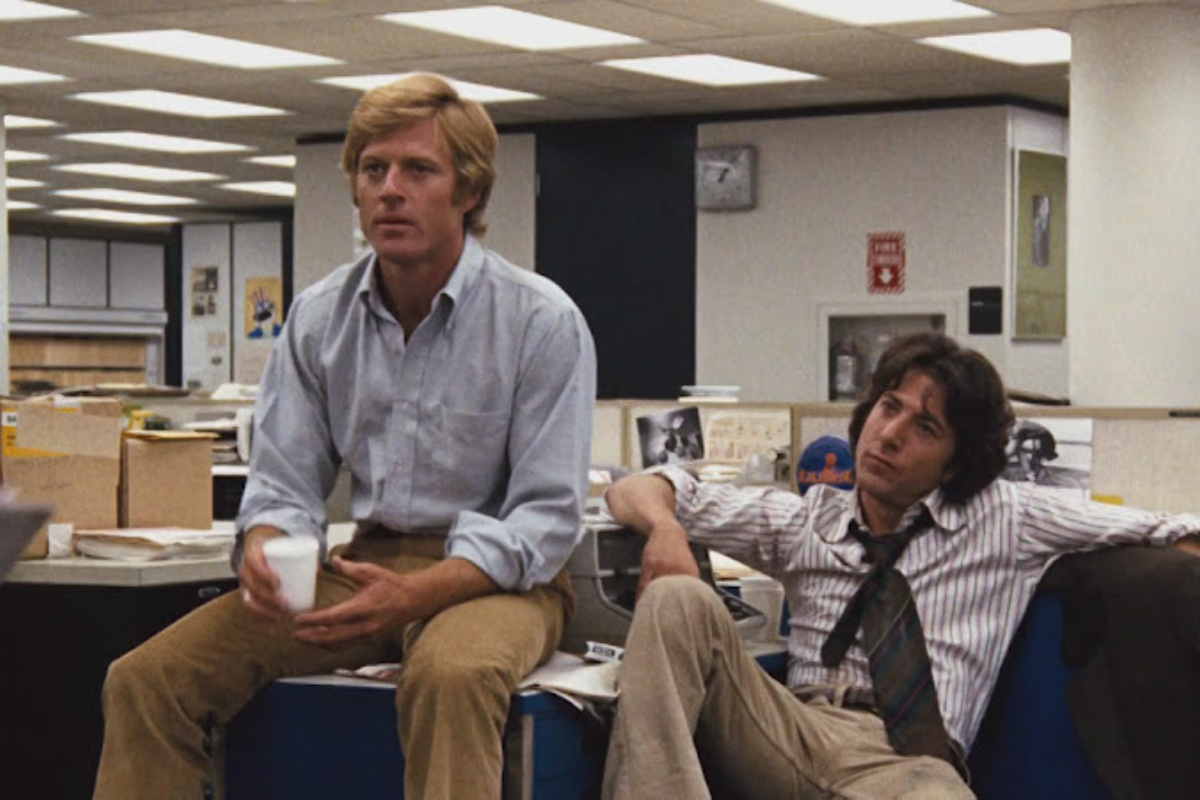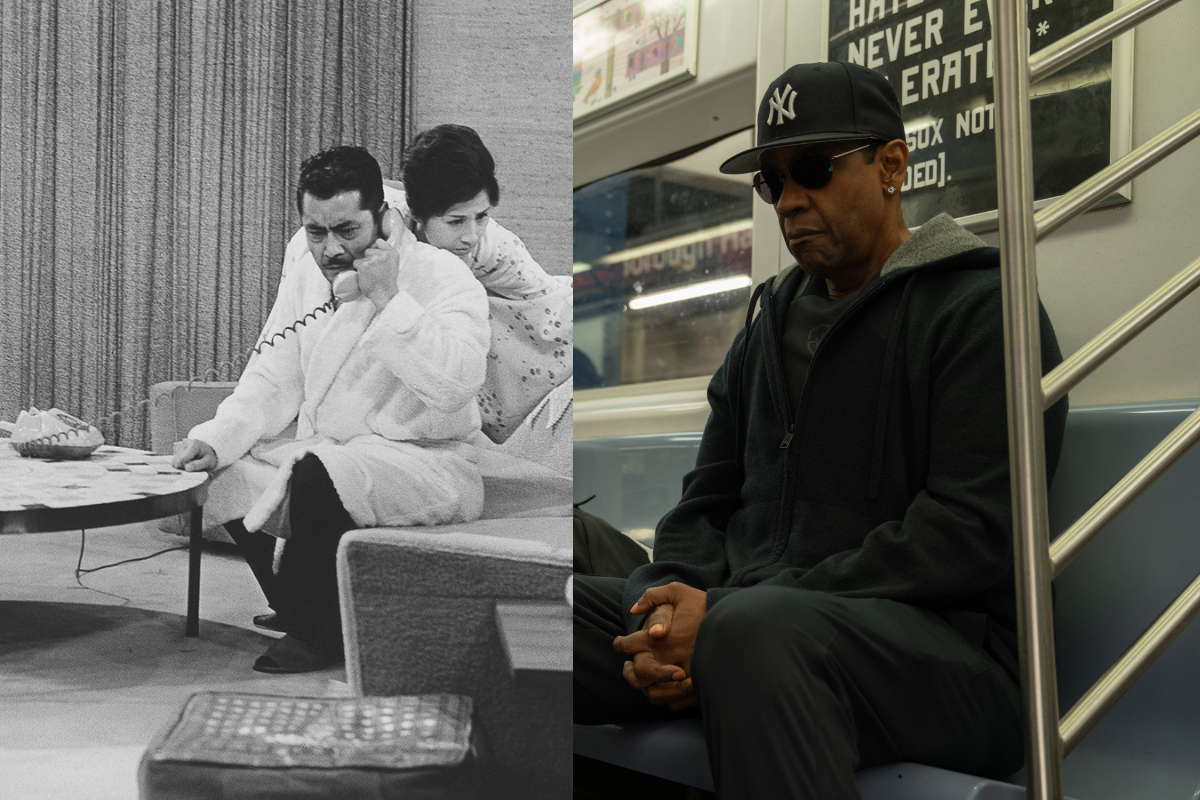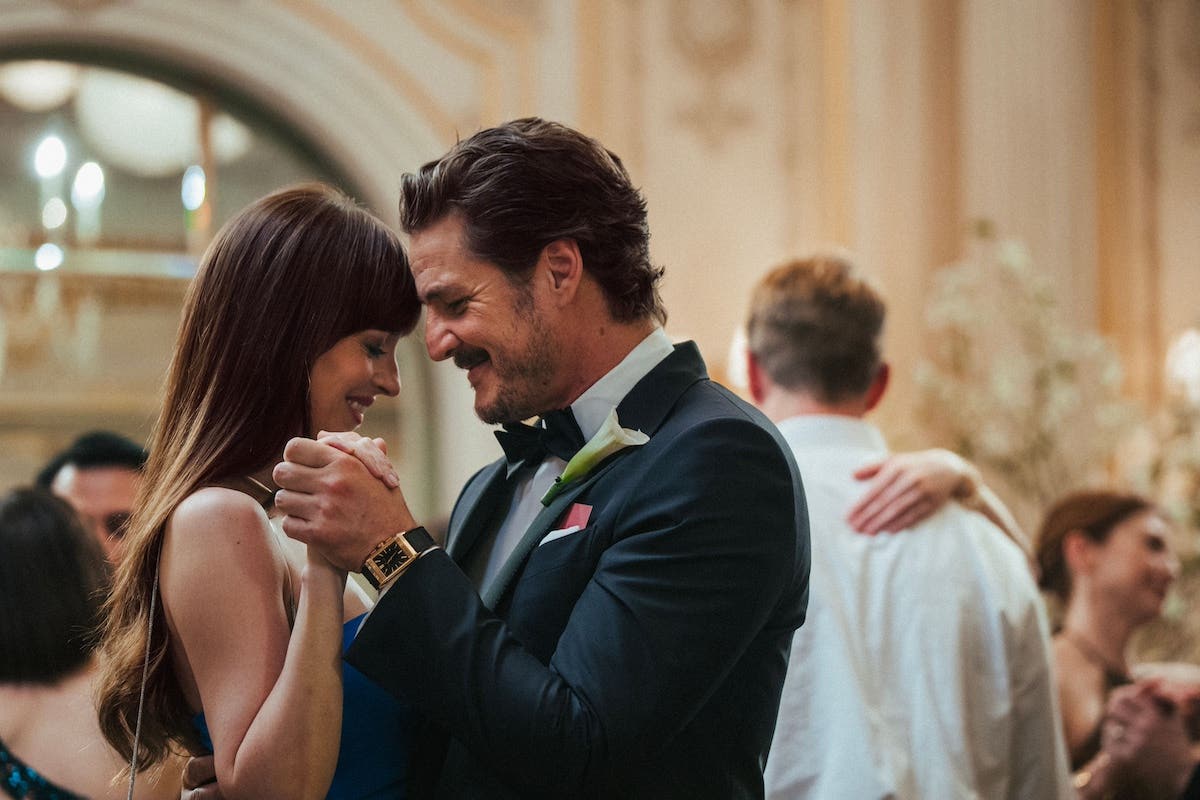UNDERSTANDING SCREENWRITING: Drafts, Smirks, and Sequels
Tom’s variety of goodies this time include ‘The Holdovers,’ ‘The Marvels,’ ‘American Graffiti,’ and ‘More American Graffiti.’
One More Draft Should Do It.
The Holdovers (2023. Written by David Hemingson. 133 minutes)
This is David Hemingson’s first feature film screenplay, but he has been writing for a variety of television shows for decades. His television credits include Just Shoot Me! (2000-2003), How I Met Your Mother (2007), Black-ish (2015), and Whiskey Cavalier (2019, which he also created). He wrote a script for a proposed series about his days in a snooty Eastern boarding school (are there any other kind?). The script got to Alexander Payne, who normally writes or co-writes the films he directs. His films as a director include Election (1999), The Descendants (2011), and Sideways (2004, which starred Paul Giamatti). Payne was not interested in getting involved in a series, but he liked Hemingson’s writing and the idea of a film set in a boarding school.
The script Hemingson and Payne (who does not take a screenwriting credit, which I thought was rather nice of him) came up with has some wonderful stuff in it. We are at the boarding school at the run-up to Christmas 1970, and while most of the students are going home, there are a few who have to stay at the school for a variety of reasons. These are called the holdovers. The faculty member picked to stay with them gets out of it by claiming a family member is suffering from lupus. Look at how we know he is lying through his teeth.
So the faculty member who gets the job is Paul Hunham, a grouchy classics professor that nobody, students and other teachers alike, like. It is a perfect part for Paul Giamatti and he is great in it. Hemingson and Payne give him a lot to do and say. Also staying is the cook, Mary Lamb, also well written and well played by Da’Vine Joy Randolph. There are several kids Hunham has to look after, but Hemingson finds a very creative way to get rid of all but one, Angus Tully, who is the biggest smartass of them all. He is played by Dominic Sessa in his first screen role. He holds the screen when he is there with Giamatti and Randolph. In other words, unless he screws up, he has a great career ahead of him.
So what do we get in the movie? Hunham and Tully trading insults. And trading more insults. And more insults. And, you get the idea. The film gets very repetitious and rather monotonous. And goes on and on.
We get a bit of a break when Hunham decides to take Tully on a “field trip” to Boston. We get nice Boston locales, and a good joke with a piece of pottery in a museum. They take in a movie, but Tully runs out of the theatre. It turns out his father is not dead, but in a mental hospital. Tully’s mom and her new husband are off on vacation, which is why he could not come home for Christmas. Hunham finds him and they have a long talk in which Tully explains his situation. There has been a subtle bonding between the two.
After they get back to the school, Tully’s mom and her new husband show up. She has found that Tully has seen his dad. She wants to withdraw Tully and send him to military school, which means he may end up in Viet Nam, where Mary Lamb’s son has recently been killed. Hunham steps up and in a very un-Hunham gesture tells the mother and the college president that he suggested Tully visit his dad. Well, we sort of buy it. Hunham has become slightly more human as the film progresses, but that act of nobility seems a bit beyond the new Hunham.
However, it works. Tully gets to stay at this school, but Hunham, whose only life has been the school, is fired. Hunham packs up and leaves, seemingly not too upset his life has been completely changed.
Now, can you figure out a way to tell that story in less than 133 minutes? If you see the movie (a lot of movie critics and real people love it), figure out what you could cut, or otherwise rework, to make flow faster and better. In other words, it needs another draft.
Two Fewer Drafts Might Have Done It.
The Marvels (2023. Screenplay by Nia DaCosta and Megan McDonnell and Elissa Karasik [and possibly others]. 105 minutes)
What a disaster this was at the box office! (It wasn’t really, but people thought it was. Ah, social media.) What a blow to the Marvel Cinematic Universe! Is this the end of the MCU?!?!
Probably not, although, I am sure the misogynistic trolls, who have been after the Captain Marvel/Brie Larson movies since Captain Marvel (2019) would like to think so, since they failed to turn the 2019 movie into a flop.
I suspect that The Marvels simply came along at the wrong time, in the backdraft of Barbenheimer. Compared to those two giant hits, The Marvels seems conventional, since we have been seeing the Marvel and DC films in great quantities for several years now. The Barbenheimer movies seemed fresh and original. That may have put a dent in the MCU and DC kinds of movies. Only time will tell.
But here’s the thing. The Marvels is not a terrible movie. Not great, but not awful. It has one major flaw, which I will get to eventually, and some minor ones, which I will get to now. In my review of Captain Marvel, which you can read here, I made the point that the character scenes, with Carol Danvers (Captain Marvel) and her old Air Force buddy Maria Rambeau (and Maria’s little daughter Monica) were a nice, unexpected counterpoint to all the action. In the new movie, we get Monica, now all grown up and still pissed at Carol for not coming back to see her. They have to team up to save the world, or whatever they are doing in this movie. The relationship is edgy, but unlike the Carol/Maria scenes in the first film, their scenes occur over the entire film rather than just in the second half, so they are a continuing counterpoint to the action.
The new, and wonderful, wild card is Kamala Khan (Iman Vellani, who steals the movie; somebody please pair her up with Dominic Sessa in a film), a teenage fan of Captain Marvel. Kamala has posters of Captain Marvel in her room, and other Marvel knickknacks. She finds a bracelet, which gives her superpowers. Well, some superpowers; one of the villains has the other bracelet. Kamala’s finding her superpowers provides a lot of slapstick and also connects her with Carol and Monica. Kamala freaks out on meeting the real Captain Marvel, which sometimes keeps her from behaving as smartly as she should. The young recruit who fumbles around among her betters is a standard character, but the writing and especially Vellani’s performance makes it fresh.
The scenes with the three of them bonding are the most interesting in the film, more than the action/special effects scenes. Here is the downside of CGI: you can create elaborate scenes that just get exhausting to watch. There are scenes in The Marvels that in terms of special effects could have been the big climax of big pictures of 60 or 70 years ago. The collapse of a cave dwelling reminded me of Samson pulling down the temple at the end of the 1949 De Mille film Samson and Delilah. The writers really should have stopped a few drafts earlier and not kept adding special effects scenes.
The slapstick with Kamala helps keep the picture afloat, and there are some good gags, both verbal and sight, to liven the picture. I particularly liked Captain Marvel’s cat, who seems to zip through time and space as easily as the Captain does. Her cat can also swallow large amounts of junk. Just when you think that is merely a running gag, it provides a plot twist. Nick Fury and his team are in a headquarters that is under attack by some of the baddies. They do not have enough escape pods for all the people. There has been a weird red thing, or actually several in the headquarters, that open up to reveal a lot of kittens. The kittens swallow up the humans, they all fit into the pods, fly away to a safe place where the kittens regurgitate the humans. Weird scene, but listen to the music on the soundtrack, which got the biggest laugh from the audience I saw the film with.
OK, I have mentioned many of the minor flaws. Here is the killer one. The thing I liked best about Captain Marvel was that, as I wrote in my review, Larson “has an amazing range of smirks, suitable for all occasions.” She gives a great smirk. But not in this movie! She does not get to have a single smirk. That’s like putting Tom Cruise in a movie where he does not run. I suspect the folks at Marvel thought, probably rightly, that the misogynist trolls were offended by a woman who they felt was smirking at…them. But for the rest of us who live in the 21st century, women should be allowed to smirk. Especially Brie Larson, who is so good at it.
Some Sequels Work, But Others…
American Graffiti (1973. Written by George Lucas and Gloria Katz & Willard Huyck. 110 minutes) and More American Graffiti (1979. Written by B.W.L. Norton, based on characters created by George Lucas and Gloria Katz & Willard Huyck. 110 minutes)
The legends about American Graffiti are many and varied. It was made for less than a million dollars. Universal did not think it was good, and Francis Ford Coppola, one of its producers, offered to buy the film from the studio with some of his profits from The Godfather (1972). It made stars of most of its cast.
The legends about its sequel, More American Graffiti, are rather limited. It was a total flop and disaster at the box office. Most people have never seen it.
There is no question that the first film struck a chord with audiences when it came out. It was mostly that, although set in 1962, it was about the 1950s, a time that by 1972 was laden with nostalgia after the upheavals of the Sixties.
One reason that the first film was more successful was that the script was better. George Lucas had done the first drafts, based on his experiences growing up in Modesto, California. He brought in his friends Gloria Katz and Willard Huyck to revise it and develop the characters. As Lucas told Dale Pollock (most of the background of the two films comes from Pollock’s 1983 biography Skywalking: The Life and Films of George Lucas), “They were cardboard cutouts in my script, nonpeople. Bill and Gloria made it one hundred percent better with a combination of wit, charm, snappy one-liners, and punched up characters.”
That is true, but what is also crucial to Graffiti working is that the characters are paired off with the perfect choices of other characters. As I wrote in my 1982 book Screenwriting, “Curt hanging out with the Pharaohs gives you more interesting scenes than Milner and the Pharaohs. Pairing Milner with the underaged Carol gives you scenes that tell you a lot about both of them. Milner meeting Debbie would give you an ordinary make-out scene, but pairing her with Terry the Toad is funny.” For example, look at how Milner and Carol react to each other, or how Debbie deals with all the problems Terry gets them into.
Lucas’s original understanding was that he would do two pictures for Universal. His second one was going to be Star Wars, but Universal just did not think there was an audience for sci-fi pictures. Yes, William Goldman was right: In Hollywood, nobody knows anything about what will work. What the studio wanted Lucas to do was a sequel to Graffiti, which he did not want to do. He felt he had done everything he wanted to do with those characters, of whom nearly all of the male ones had been at least partially based on himself. Lucas asked a friend from his USC days, Howard Kazanjian, to produce the sequel. Kazanjian suggested B.W.L. Norton, who had written films with a more Sixties feeling, such as Cisco Pike (1971), Outlaw Blues (1977), and Convoy (1978). Lucas approved of Norton, since Lucas hoped that the sequel would be deeper and more serious than the first one, as many people felt The Godfather II (1974) was deeper than the original. That was an interesting idea, but it does not work in the film, since Norton does not dig deep enough into the characters and situations.
Instead of taking place in one night, as Graffiti does, More takes place on four separate New Year’s Eve: 1964, 1965, 1966, and 1967. In the first film, people from different stories run into each other. There is less of that here.
In 1964 Milner is participating in a large drag race going against a large corporation which he has always wanted to beat. We get a lot of racing in these scenes, which get less and less interesting as the film goes on. Instead of Carol, he gets involved with Eva, who does not speak English. That means we do not get the kinds of reactions we got between Milner and Carol in Graffiti.
In 1965 Terry is now in the army and in Viet Nam. He is trying to find a way to get out and get home. There is the combination of the reality of the war and Terry’s slapstick attempts to get out and they do not mix well. For some reason, Joe, the leader of the Pharaohs back home is in his unit, but Norton does not make much of that.
In 1966, Debbie is now a go-go dancer in San Francisco, supporting a ne’er-do-well musician who cheats on her. She gets involved with another band and ends up becoming part of the band. This is the liveliest episode of the film, partly because of Candy Clark’s performance.
In 1967 we start out with Steve and Laurie married. She wants to get a job, but Steve objects. So we think this episode is going to be about the women’s movement, but that gets quickly dropped as we get a bunch of very generic anti-war protests.
The first film traded on Fifties nostalgia, but very few people were nostalgic in the same way about the Sixties. There are a lot of movies and television shows about the Fifties, but the Sixties are a lot more difficult to deal with in mainstream American films.
Learn more about the craft and business of screenwriting and television writing from our Script University courses!
Tom Stempel is a Professor Emeritus at Los Angeles City College, where he taught film history and screenwriting from 1971 to 2011. He has written six books on film, five of them about screen and television writing. You can learn more about his books here. His 2008 book Understanding Screenwriting: Learning from Good, Not-Quite-So- Good, and Bad Screenplays evolved into this column. The column first appeared in 2008 at the blog The House Next Door, then at Slant, and then Creative Screenwriting before it found its forever home at Script.
In the column he reviews movies and television from the standpoint of screenwriting. He looks at new movies, old movies, and television movies and shows, as well as writing occasional other items, such as appreciations of screenwriters who have passed away, plays based on films, books on screenwriting and screenwriters, and other sundries.
In September 2023 Tom Stempel was awarded the inaugural Lifetime Achievement in the Service of Screenwriting Research by the international organization the Screenwriting Research Network.







